Explore All Orthopedic Conditions ➜
Hip Dysplasia in Dogs:
More than a joint problem. Learn how you can help your dog diagnosed with hip dysplasia.
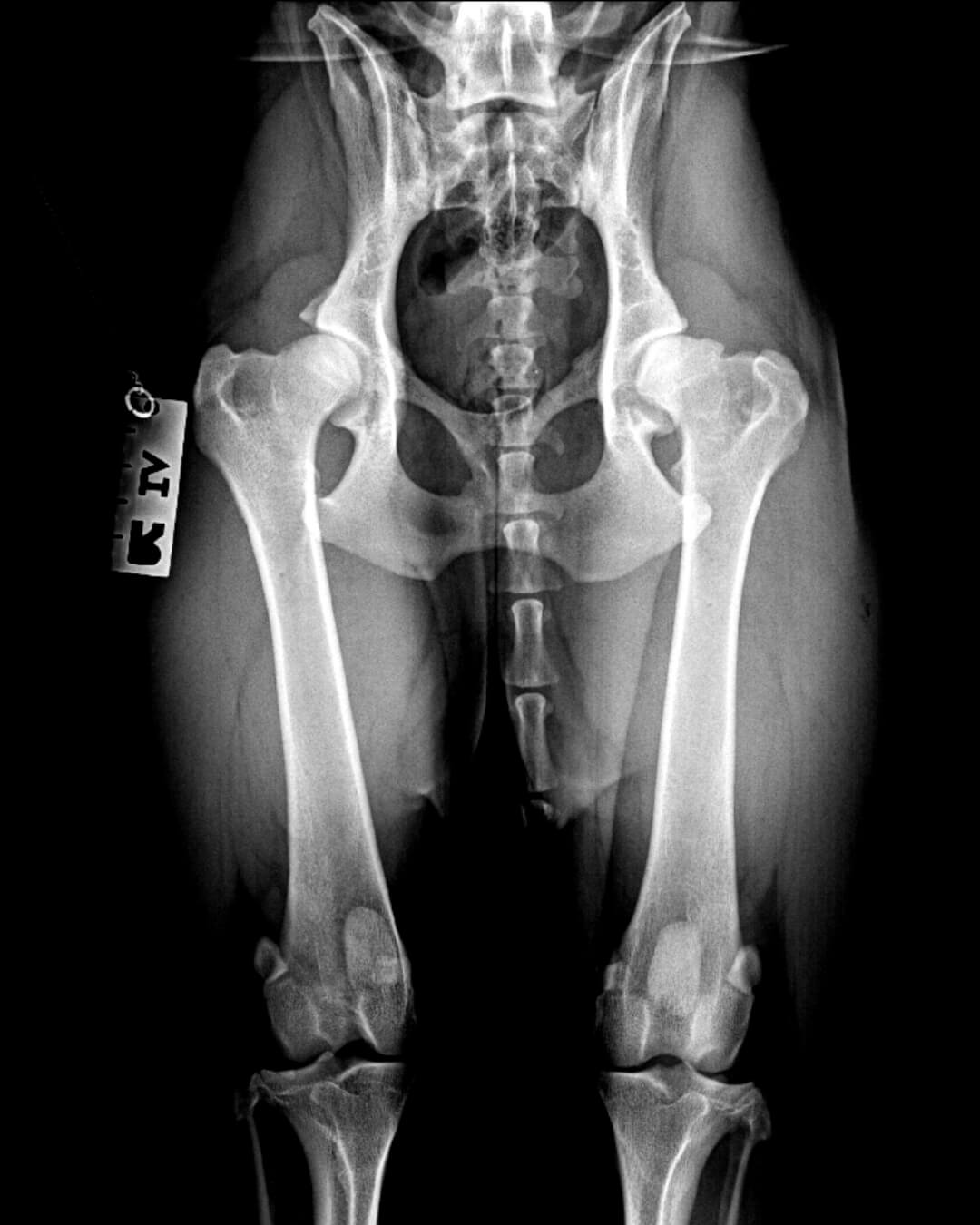
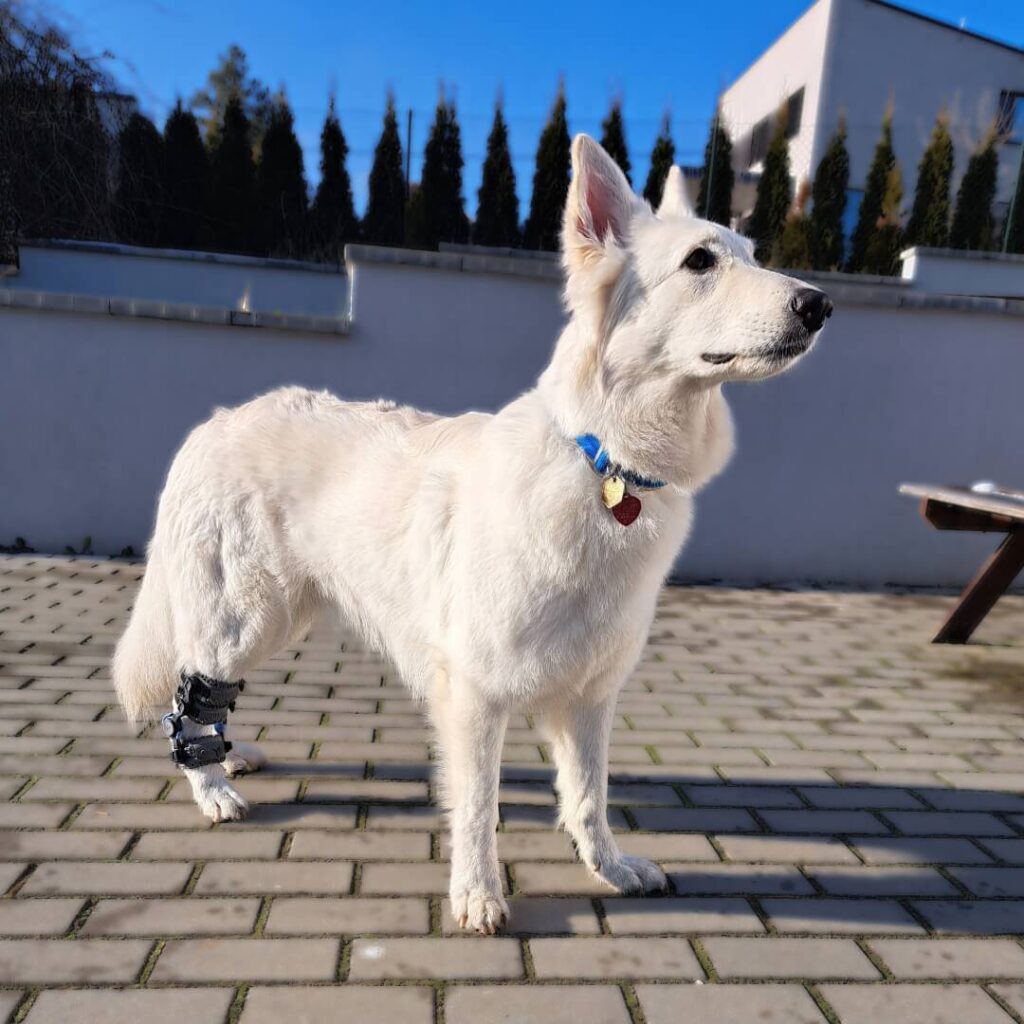
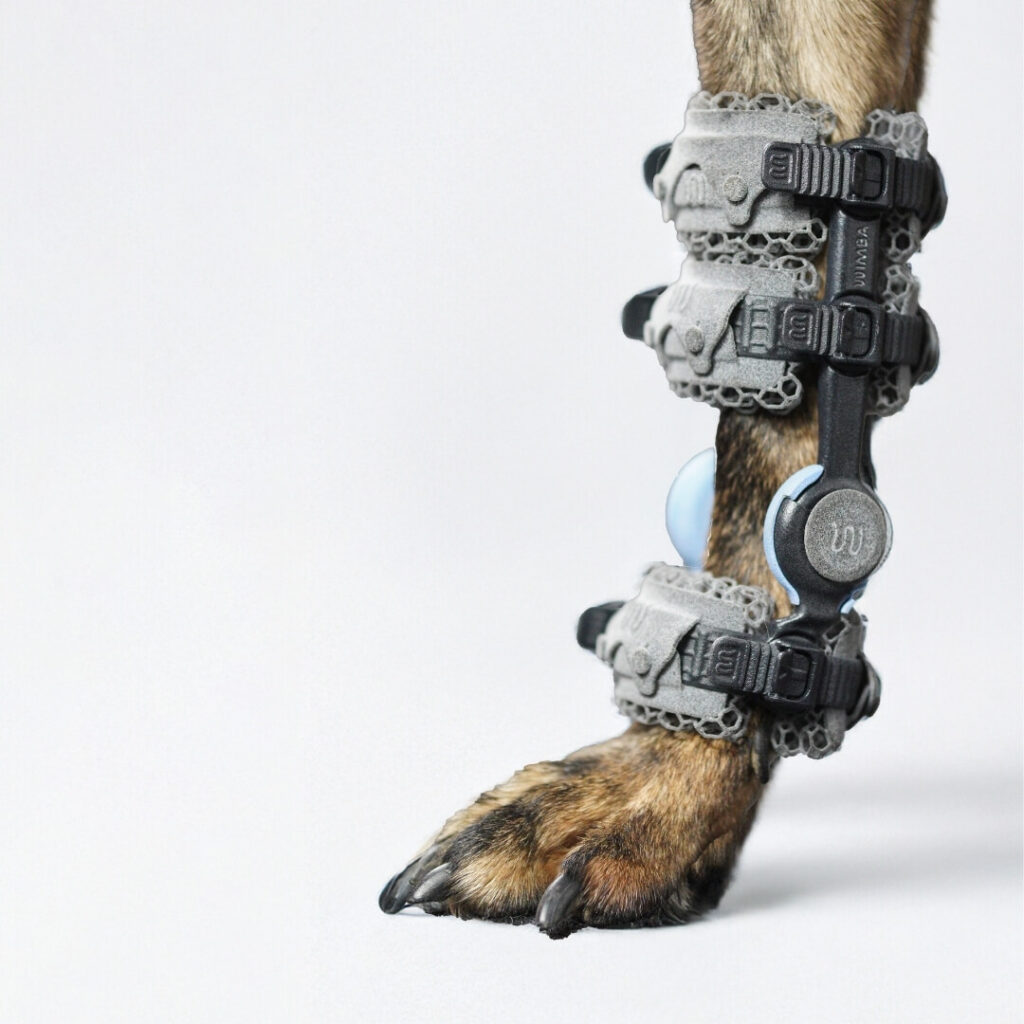

Is Your Dog Showing Signs of Hip Dysplasia?
Hip Dysplasia in dogs is very common orthopedic issue.
Upload a photo of your pet, diagnosis, and your contact info —
we’ll see if your pet may benefit from a custom-fit WIMBA brace.
Understanding Hip Dysplasia in Dogs
Hip dysplasia is a well-known orthopedic condition, notable in large and giant breed dogs. But as common as it is, the conversation around it is still evolving. We’re learning that hip dysplasia affects far more than just the hip. It influences movement, comfort, posture, and even long-term mobility in ways that are easy to overlook, especially in younger dogs who adapt well to discomfort.Understanding how hip dysplasia shows up, and how it fits into the broader picture of musculoskeletal health, allows us to support dogs more effectively at every stage of life.

Written by:
Dr. Emily Hall DVM, CCRT, CPAT-KA
What Is Hip Dysplasia?
Instead of the ball of the femur fitting snugly into the socket of the pelvis, the joint is loose or misaligned. This instability leads to increased friction and wear over time, eventually damaging cartilage and causing inflammation. Left unmanaged, it progresses to potentially severe arthritis — a painful, degenerative condition that limits movement and quality of life.
While genetics play a major role, other factors such as rapid growth, nutrition, and inappropriate exercise during puppyhood can influence how severely hip dysplasia develops and when symptoms begin to appear.
Although many dogs are formally diagnosed between 8 and 10 years of age, signs of hip dysplasia may appear much earlier. That’s especially true in active or fast-growing dogs with underlying laxity that hasn’t yet caused obvious lameness.

Noticed Subtle Signs of Hip Dysplasia?
Find Out If WIMBA Orthotics Are Right for Your Dog
Early Signs and Subtle Changes of Hip Dysplasia
Dogs are remarkably good at adapting. In younger dogs, hip dysplasia often presents not as a limp, but as small changes in posture or movement. You might notice hesitation when rising from rest, a reluctance to jump into the car, or a stiff, “bunny-hopping” gait when running. These signs often come and go, which makes them easy to dismiss — especially in a young, energetic dog.
However, subtle signs like these are important. They reflect discomfort, instability, and the beginning of compensatory changes elsewhere in the body.
As the condition progresses, more obvious signs tend to emerge: reduced range of motion, loss of muscle in the hind limbs, sensitivity around the hips, or difficulty with stairs. Many of these later signs overlap with the symptoms of osteoarthritis. For more on that condition and how it relates, visit our guide to osteoarthritis in dogs.

Diagnosing Hip Dysplasia
There is no single test that confirms hip dysplasia, but diagnosis usually involves a combination of physical examination and radiographic imaging. Your veterinarian may perform gait analysis, check for pain during manipulation, and evaluate range of motion in the hips.
Specialized assessments such as PennHIP or OFA screening may be used in puppies or young adults to measure laxity and assess future risk — allowing for earlier intervention before arthritis sets in.
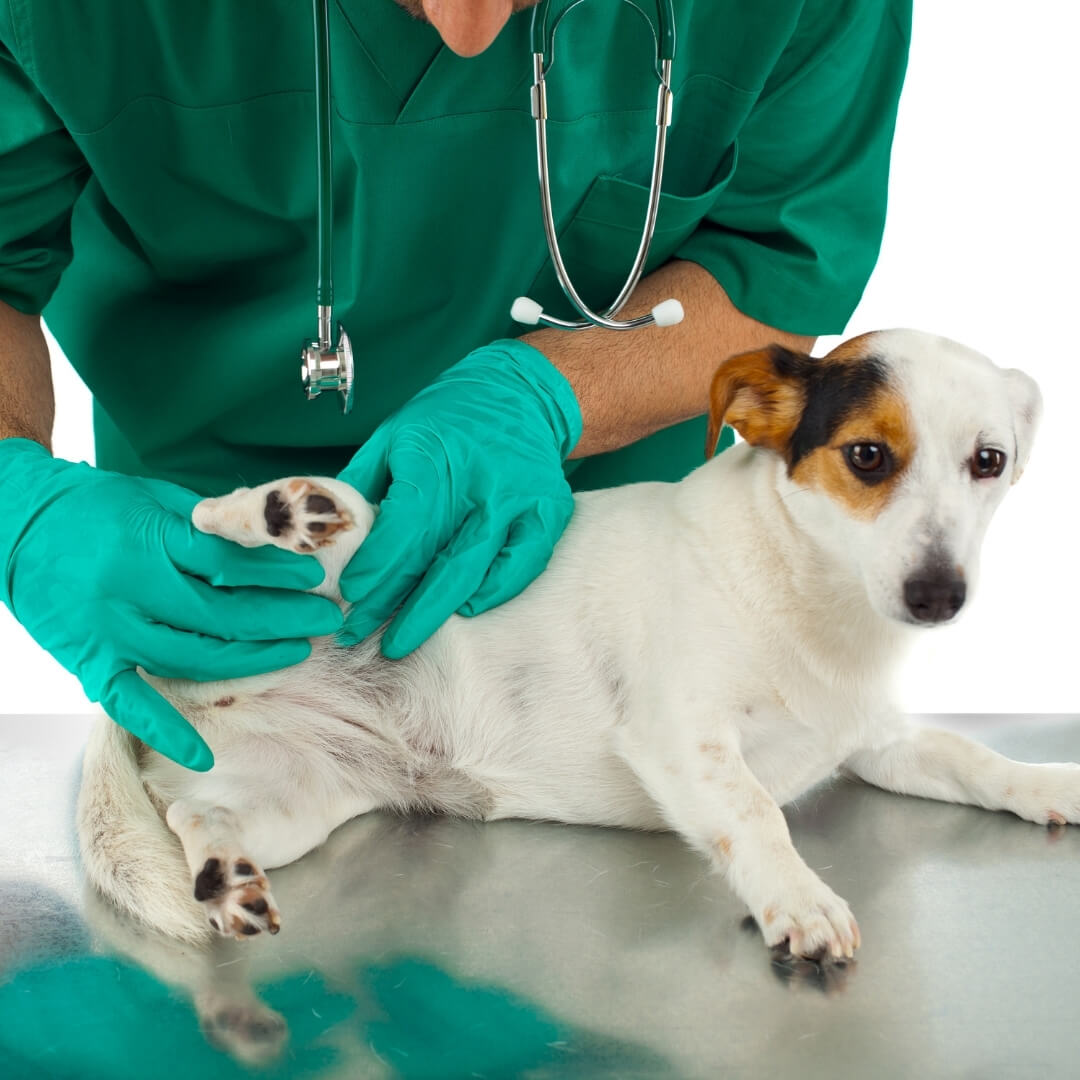
FOR PET OWNERS
Help Your Dog Walk Comfortably Again
Concerned about your dog’s health and mobility? Could a Custom Orthosis Improve Your Dog’s Mobility? Fill in the form to find out:
How the Whole Body Responds
Hip dysplasia may begin in the pelvis, but its impact is never isolated. When the hips lose stability, dogs begin to offload or adjust their posture in order to move more comfortably. Over time, these adaptations become habitual.
Hind limbs
Hind limbs may tuck underneath the body to avoid full hip extension.
Head
Head may lower to shift body weight off hindlegs.
Back
Back becomes more rounded as the pelvis and lumbar spine flex.
Weight
Weight shifts forward into the shoulders and forelimbs.
Forelimbs
Forelimbs may tuck under the body balancing the new weight shifts.
Wrists
Carpi (wrists) may become lax, leading to carpal hyperextension, with the additional weight and inappropriate biomechanical position.
These changes can lead to compensatory stress in other joints — including the stifles, carpi, and tarsi. In some cases, after femoral head ostectomy (FHO) surgery, the development of tarsal hyperextension is a long term gait pattern, which is a possible compensatory concern with long term potential side effects. Addressing hip dysplasia isn’t just about the hip, it’s about supporting the entire musculoskeletal system in a coordinated and thoughtful way!
Hip Dysplasia Treatment Options: Conservative and Surgical
The treatment plan for hip dysplasia depends on a dog’s age, clinical signs, lifestyle, and long-term goals. Management should always be individualized.
Conservative (Non-Surgical) Management
Many dogs with mild to moderate hip dysplasia respond very well to conservative care. This typically includes:
- Weight management to reduce joint load
- Anti-inflammatory medications and pain-modifying therapies
- Joint supplements and regenerative options
- Structured, low-impact exercise to maintain strength and mobility
- Rehabilitation therapy to reduce pain and restore function
Rehabilitation is especially important. Through targeted therapeutic exercise, we can support postural control, prevent muscle wasting, and reduce the risk of compensatory injury. In some cases, bracing of distal joints like the tarsus may be helpful if mechanical stress or instability is present due to long-term compensation.
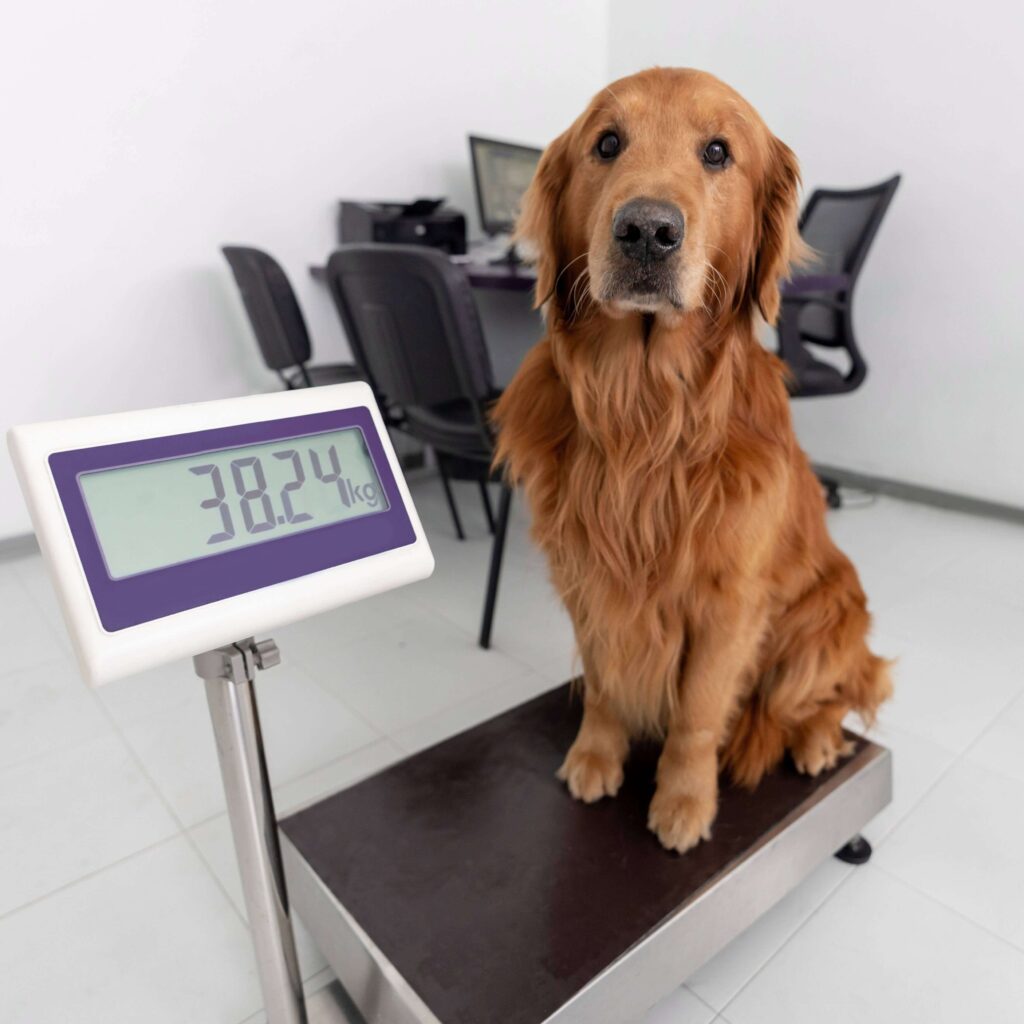
Your pet’s comfort matters.
Explore Whether WIMBA Orthotics Can Support Your Dog’s OA Journey
Surgical Intervention
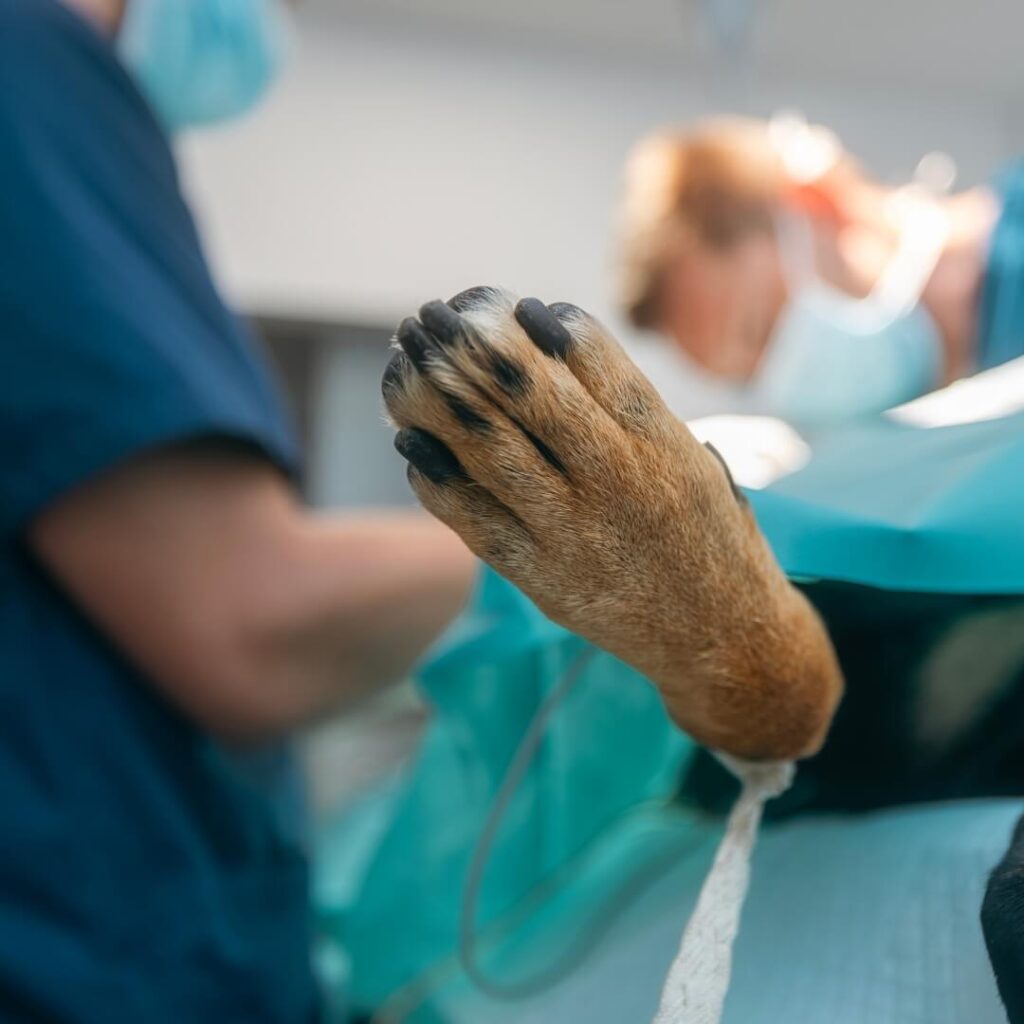
In cases where conservative care is no longer sufficient, or where joint architecture is severely compromised, surgery may be recommended. Common surgical procedures include:
- Femoral head ostectomy (FHO), which removes the damaged femoral head to create a “false joint”
- Total hip replacement (THR), which replaces the joint entirely with a veterinary medical implant
- Triple or double pelvic osteotomy (TPO/DPO), which realigns the pelvis in young dogs to improve joint congruity before arthritis develops
It’s important to remember that successful outcomes with hip dysplasia don’t come from one discipline alone. Primary care veterinarians, orthopedic surgeons, rehabilitation therapists, and other specialists all bring valuable perspectives. When we collaborate, and effectively communicate, we create better outcomes for the animals we love.
Some dogs will thrive with conservative care. Others will benefit from surgery. And across all of these paths, ongoing support, monitoring, and adjustment are key.
Final Thoughts
Hip dysplasia may start in the joint, but it affects the whole dog. By recognizing early signs, taking a proactive and individualized approach to care, and supporting the entire body — not just the hip — we can help dogs maintain strength, mobility, and joy in movement.
As we continue learning more about how conditions like hip dysplasia and osteoarthritis interact with the rest of the musculoskeletal system, one thing is clear: movement matters. And every step we support counts.
Next Condition
PET STORIES
WIMBA Orthosis in Action:
WIMBA Orthosis in Action
Cruciate Ligament Rupture
Jack
Diagnosed with immune-mediated thrombocytopenia (ITP), an autoimmune disease, surgery was simply too risky for Jack. So when he ruptured his CCL, conservative management became the only option. With the support of his dedicated vet and rehabilitation team – and a custom WIMBA Stifle Brace – Jack has regained stability, confidence, and improved weight-bearing throughout his recovery.
“Since fitting Jack has increased his walks, he has improved weight bearing and in time will gain more hamstring muscle mass. We’ve got a journey to go yet but safe to say Jack is ending the year on a positive note.”
Vault Physiotherapy
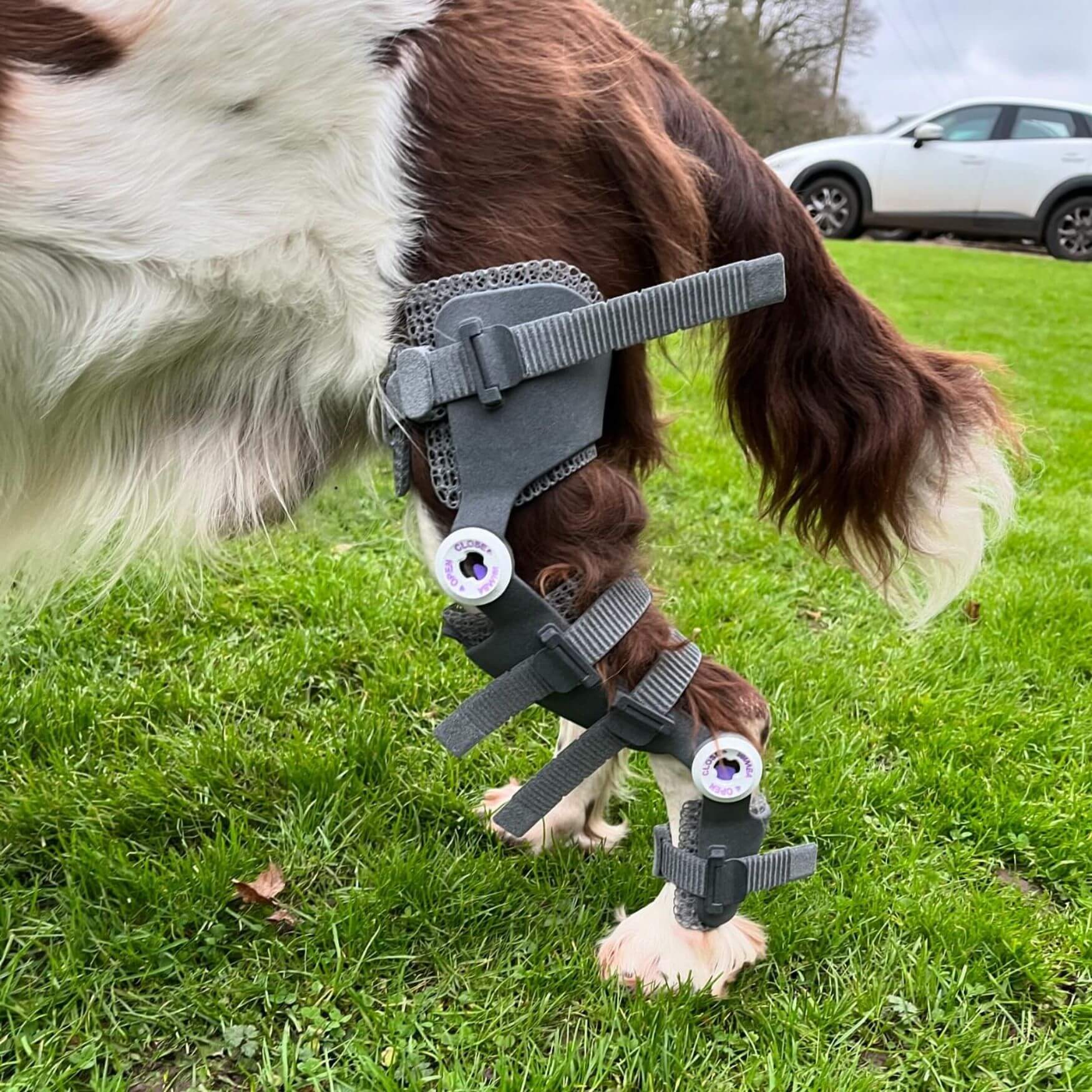
Carpal Joint Hyperextension
Oslo
Meet Oslo, a five-year-old Australian Shepherd who loves exploring the summits of the Haute-Savoie and the Alps. Following surgery, he now experiences carpal hyperextension, which impacts his mobility and overall quality of life. The introduction of the WIMBA orthosis marked a significant turning point in Oslo’s recovery.
“I found out about WIMBA, a company that manufactures custom-fit braces in collaboration with vets, for which lightness and mobility are its main assets. Easy to put on, it has really changed Oslo’s life! I’ve rediscovered my dog, through lots of mountain activities and outdoor sports!”
Flo Vani
Owner of Oslo

Cranial Cruciate Ligament Rupture
Simba
Simba, a 31 kg dog, was diagnosed with cranial cruciate ligament rupture. With the support of the WIMBA Stifle Brace, Simba’s mobility is improving. See how the WIMBA Stifle Brace adds stability to Simba’s stifle joint.
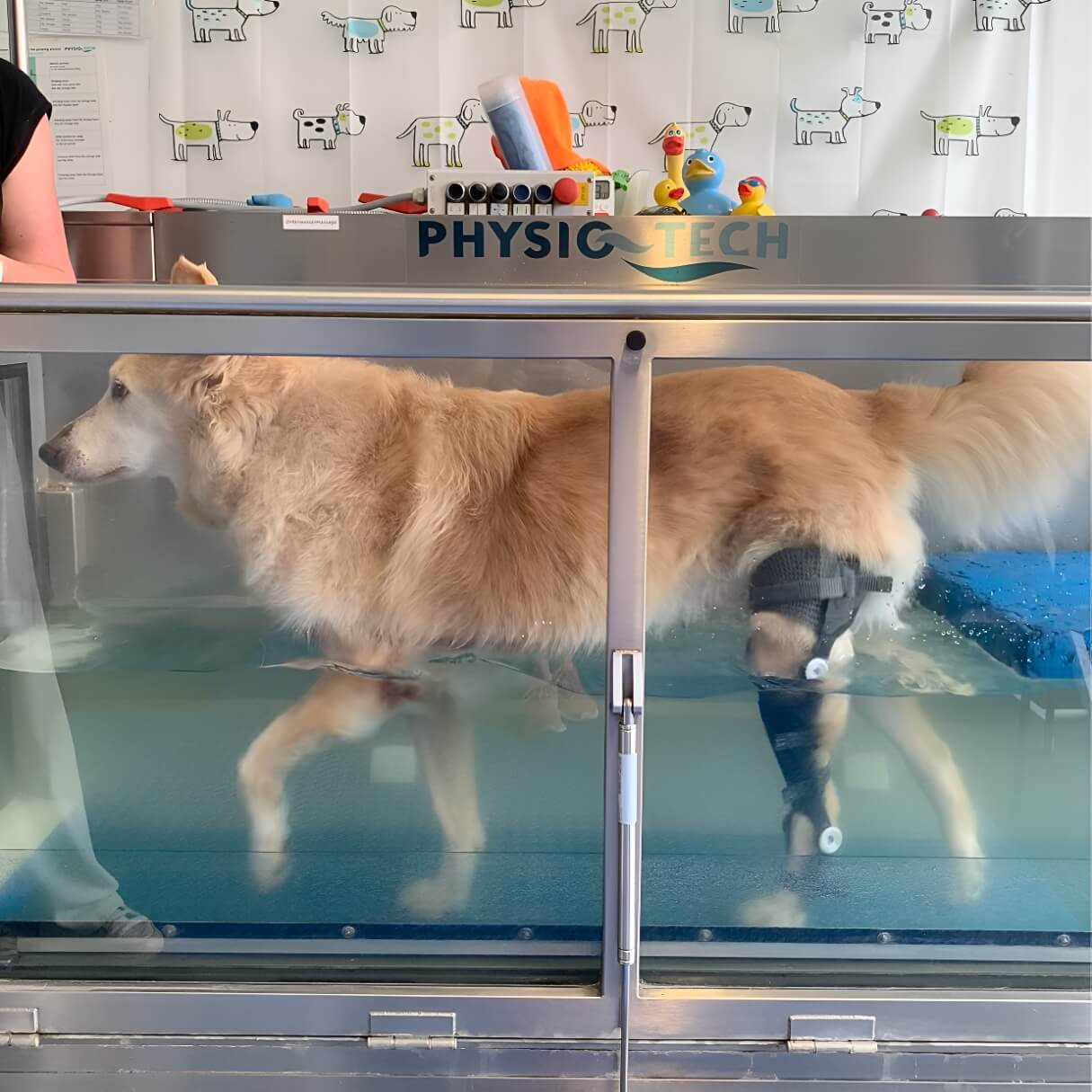
Compensatory Carpal Hyperextension Injury
Barry
After suffering a severe carpal hyperextension injury in October 2024, Barry has gone through a lot. Today, in the first part of Barry’s story, we’re sharing a huge milestone – his first steps in his WIMBA Carpus Go brace! This is just the beginning, but seeing him regain mobility and confidence makes every challenge worth it.


Follow WIMBA on Social Media
Follow WIMBA for more pet mobility tips & success stories!
This blog post is for informational purposes only and should not replace professional veterinary advice. Always consult your veterinarian for an accurate diagnosis and tailored treatment plans for your pet.